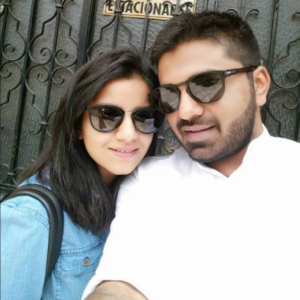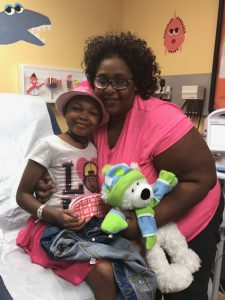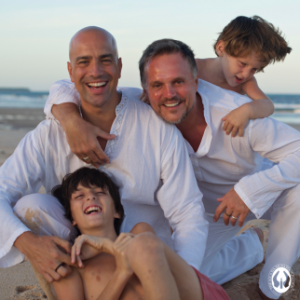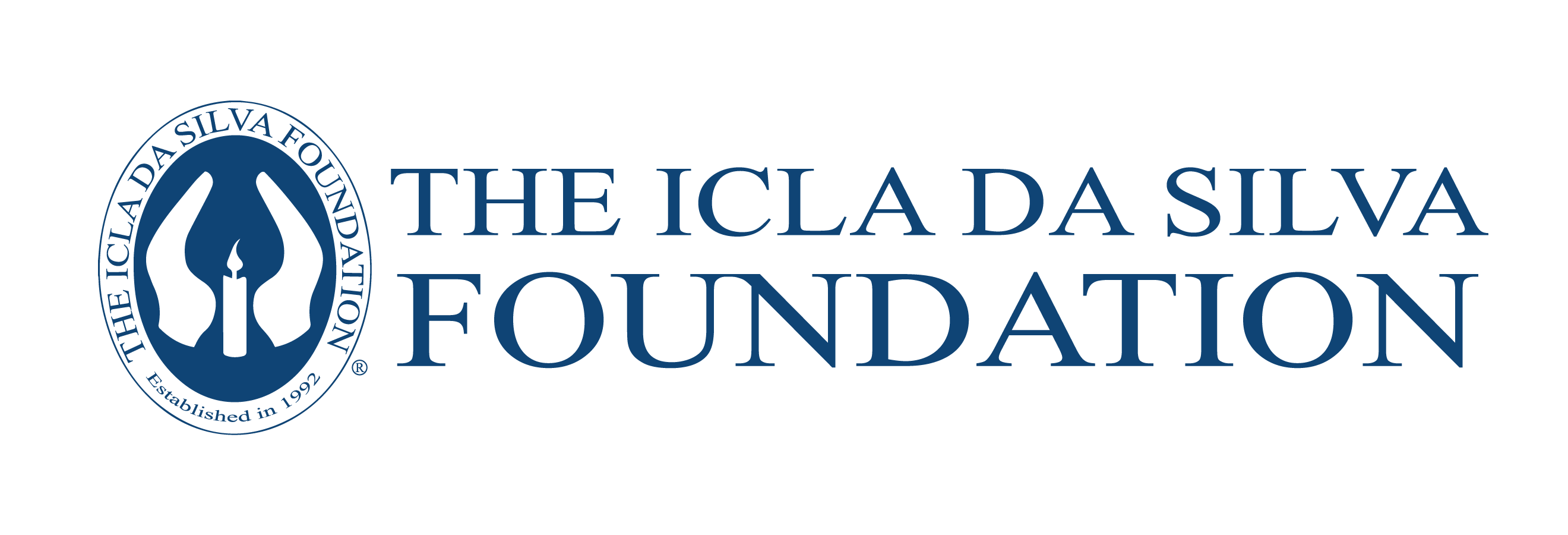What if you were the only one who could save a life? If you could be that hero, the one that someone has been looking for and perhaps the only one in the world who fits the criteria, would you do it? Would you take the necessary steps and give life to another?
Every year, more than 14,000 patients are diagnosed with blood cancers like leukemia, lymphoma and sickle cell anemia. For these patients, a stem cell or bone marow transplant is their only hope for survival.
70% do not have a matching donor in their family. They are reliant on finding a donor through the Be The Match bone marrow registry. It’s the largest and most diverse registry in the world, but it’s not large enough, or nearly diverse enough.
The Icla da Silva Foundation is the largest recruitment center for Be The Match. Our focus is on supporting under represented communities, and we work tirelessly to find bone marrow matches for minority groups and mixed-background ethnicities whose current donor pool is either far too small, or almost non-existent.
The simple fact is that not enough people of ethnic diversity have joined the registry. This has resulted in a registry that is currently under represented for many ethnic segments. We are working to change this. You can help by joining and asking those close to you to do the same.
Aashim’s Search
 Aashim Joy is one of the potential recipients still searching for his perfect bone marrow match. He was diagnosed with B-Cell Type Acute Lymphoblastic Leukemia in July last year, and he requires a bone marrow transplant. Like many blood cancer sufferers, he has no other hope of beating the disease.
Aashim Joy is one of the potential recipients still searching for his perfect bone marrow match. He was diagnosed with B-Cell Type Acute Lymphoblastic Leukemia in July last year, and he requires a bone marrow transplant. Like many blood cancer sufferers, he has no other hope of beating the disease.
One year into his marriage, his diagnosis was a shock and the new couple’s American Dream seemed to fade before their eyes. Involved in the financial sector in New York City, the couple had recently relocated from Bangalore to start a new life together in the Big Apple when Aashim was diagnosed.
Reaching out to the Be The Match Registry, the largest in the world, Aashim and Reema were hopeful of a quick match and a happy ending. Despite their time and enthusiasm, the search has been longer than expected. People of Indian descent are not common on the registry, which makes the genetic and ethnic aspects of finding a perfect match more difficult.
“The Indian community is underrepresented [on the bone marrow donation registry], which makes it more difficult to find a matching donor.”
The search is still on for Aashim’s perfect bone marrow match. Both he and Reema remain positive of finding a match, urging everyone they meet to sign up and join the bone marrow registry. Not only for the sake of Aashim and his lovely wife, but for other patients who walk this difficult road beside them.
Read more about Ashim’s story here and here.
Joining the Registry
Signing up as a potential donor is simple. If you match a patient, it is obviously a life-saving experience for the recipient, but it can also be life-changing for the donor. You are literally giving someone a second chance at life.
The process involves clicking the link, setting up an account with an email and a password, and providing some general health and ethnicity information. You will receive a swab kit in the mail. Once you return the kit, you will be included in searches for patients in need of a matching donor.
If you match a patient and are eventually asked to donate bone marrow, please say yes. The process is simpler than you think. You can read about it here. The bone marrow cells in your body are replenished within four to six weeks after the procedure and your life goes on.
Each person who joins the Registry is a new potential match for a patient in need.
Every Bit Helps
If bone marrow donation is not an option for you, the following are also helpful ways to get involved and help a patient in need:
- Organize a bone marrow drive.. We’re here to provide tips and suggestions on how to run a successful drive in your community. Who knows? This could be the difference between life and death for somebody waiting for a bone marrow transplant.
- Donate your time. Patients and their families spend the majority of their precious time doing mundane administrative and logistical tasks while looking for assistance and finding a match. Why not offer to help out at a local clinic or volunteer at an organization like the Icla da Silva Foundation?
- Give Financially. Always a great need in a non-profit based organization, financial assistance is a tremendous help in donor searches, educational awareness events, and covering economically-challenged patients’ medical bills.
- Support events and fundraisers. There are people all over the world trying to assist in bone marrow donation and awareness. Go to their fundraising events, tweet about it, share a link on social media, support media efforts and invite some friends! Our 8th annual Matchmaker 5K Walk is just around the corner, sign up now.
Heritage and Ethnicity Matter!
Aashim is a wonderful example of where ethnicity and genetics play a pivotal role in bone marrow donation. The Indian donor pool is, unfortunately, not representative or diverse enough to cater to such a large population; and Aashim has not been able to find a suitable donor match thus far. The larger the pool of donors, the more diverse the pool becomes, significantly improving the probability of finding a match.
Success Stories
There is hope. Many of our success stories are a testament to perseverance and tenacity, often at the hands of an invested team of supporters and medical professionals. There are victories worth mentioning, and heroes who decided to take the leap.
The Flaherty Brothers
 At age 3, William was diagnosed with hemophagocytic lymphohistiocytosis (HLH). The immune system attacks the body’s own organs instead of protecting it against foreign invaders. Charles was only seven at the time, but turned out to be a perfect match for his little brother and insisted on donating his stem cells to save William. The procedure was on a Thursday and Charles was back at school by the Monday morning remembering the worst part of the whole experience as having to take off the bandage!
At age 3, William was diagnosed with hemophagocytic lymphohistiocytosis (HLH). The immune system attacks the body’s own organs instead of protecting it against foreign invaders. Charles was only seven at the time, but turned out to be a perfect match for his little brother and insisted on donating his stem cells to save William. The procedure was on a Thursday and Charles was back at school by the Monday morning remembering the worst part of the whole experience as having to take off the bandage!
Both brothers are now healthy and living life to the full back in Puerto Rico. After the procedure, Charles was treated to a ski trip with his father and unbelievably, it has lead to a lifelong passion. He was Puerto Rico’s single star on the Alpine Ski team at the 2018 Pyeongchang Olympics.
Read more about Charles and William’s story.
Mya
 Smiling is a universal language, and Mya is an expert. This 9-year-old has been through an epic battle against T-cell leukemia and came out on top. Described as a ‘beautiful, positive, joyful spirit,’ she and her family are finally seeing the light after years of struggle against this devastating illness.
Smiling is a universal language, and Mya is an expert. This 9-year-old has been through an epic battle against T-cell leukemia and came out on top. Described as a ‘beautiful, positive, joyful spirit,’ she and her family are finally seeing the light after years of struggle against this devastating illness.
Chemotherapy was ineffective in treating her condition. Thankfully one of Mya’s brothers was a 100% percent match and he gladly donated his bone marrow stem cells. Her recovery is going well, but the treatment is expected to continue for the next two to five years, which means the financial strain on the family is huge.
Tancrede
 Born at 27 weeks, Tancrede Bouveret was the spark in his father, Luc’s, eye – a tiny, perfect addition to the family. At age of eleven he was diagnosed with Myelodysplastic Syndrome (MDS), which eventually progressed into Leukemia. Unfortunately, Tancrede’s little brother was not a suitable donor (only 25% of siblings are).
Born at 27 weeks, Tancrede Bouveret was the spark in his father, Luc’s, eye – a tiny, perfect addition to the family. At age of eleven he was diagnosed with Myelodysplastic Syndrome (MDS), which eventually progressed into Leukemia. Unfortunately, Tancrede’s little brother was not a suitable donor (only 25% of siblings are).
After an extensive search in Brazil, the U.S.A and France, the excited family was able to locate a 100% percent match and Tancrede was saved. Complications resulted in an extra long hospital stay and a need for more lymphocytes, which his donor gladly provided. On October 18, 2017, Tancrede met his bone marrow donor for the first time at the Icla da Silva Hope Gala in New York City. It was an unforgettable moment of shared joy and hope for humanity.
Read Trancrede’s story.
They Said Yes
The Icla da Silva Foundation has the privilege of seeing successful donation efforts and those which make them possible. Here are three of our favorite donor stories:
Join the Movement
So, are you open to the possibility of saving someone’s life? Take the leap and register as a bone marrow donor. Help however and whomever you can, because life is short and everyone deserves an opportunity to flourish in the time we have been granted.
Thanks for reading. Please share.

 English
English Spanish
Spanish Portuguese
Portuguese